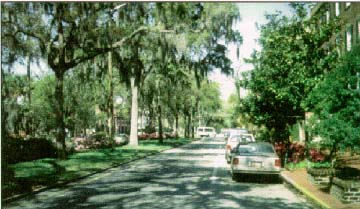| Environment |
|
|
INTRODUCTIONAn important concept in highway design is that every project is unique. The setting and character of the area, the values of the community, the needs of the highway users, and the challenges and opportunities are unique factors that designers must consider with each highway project. Whether the design to be developed is for a modest safety improvement or 10 miles of newlocation rural freeway, there are no patented solutions. For each potential project, designers are faced with the task of balancing the need for the highway improvement with the need to safely integrate the design into the surrounding natural and human environments. |
 |
|
In order to do this, designers need flexibility. There are a number of options available to State and local highway agency officials to aid in achieving a balanced road design and to resolve design issues. These include the following:
When faced with extreme social, economic, or environmental consequences, it is sometimes necessary for designers to look beyond the "givens" of a highway project and consider other options. The design exception process is one such alternative. In other cases, it may be possible to reevaluate planning decisions or rethink the appropriate design. For existing roads, sometimes the best option is to maintain the road as is or make only modest 3R improvements. Since the passage of ISTEA, States also have the ability to develop new standards outside the Green Book criteria for all roads not on the NHS. It is important, however, to recognize that the Green Book criteria are based on sound engineering and should be the primary source for design criteria. When the impact of the proposed action is evaluated and flexible design considerations are appropriate, they should be investigated. All these options may give designers flexibility to use their expertise and judgment in designing roads that fit into the natural and human environments, while functioning efficiently and operating safely. The ultimate decision on the use of existing flexibility rests with the State design team and project managers. Each situation must be evaluated to determine the possibilities that are appropriate for that particular project. Managers are encouraged to allow the designers to work with staff members from other disciplines to aid in exploring options, constraints, and flexibilities. |
|
|